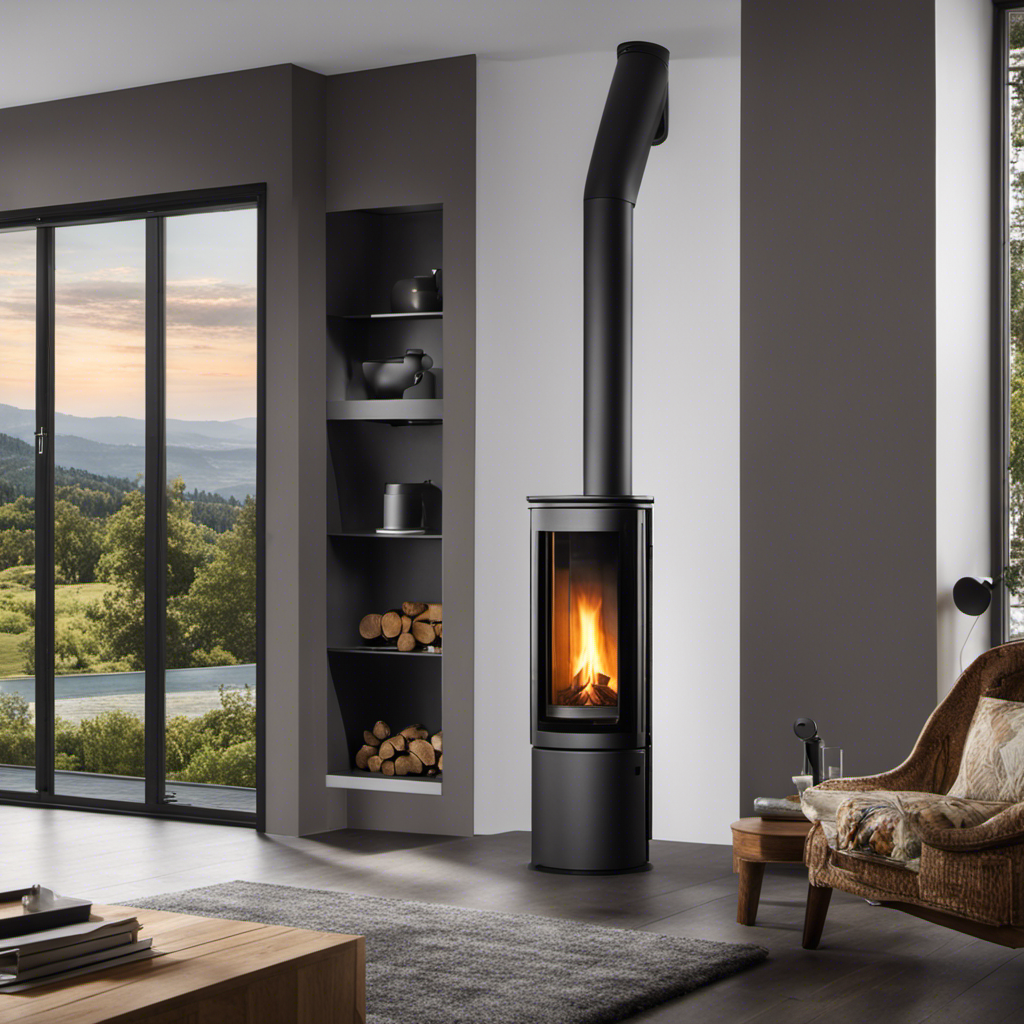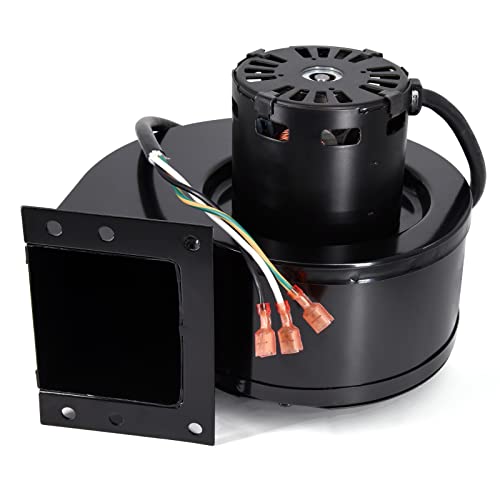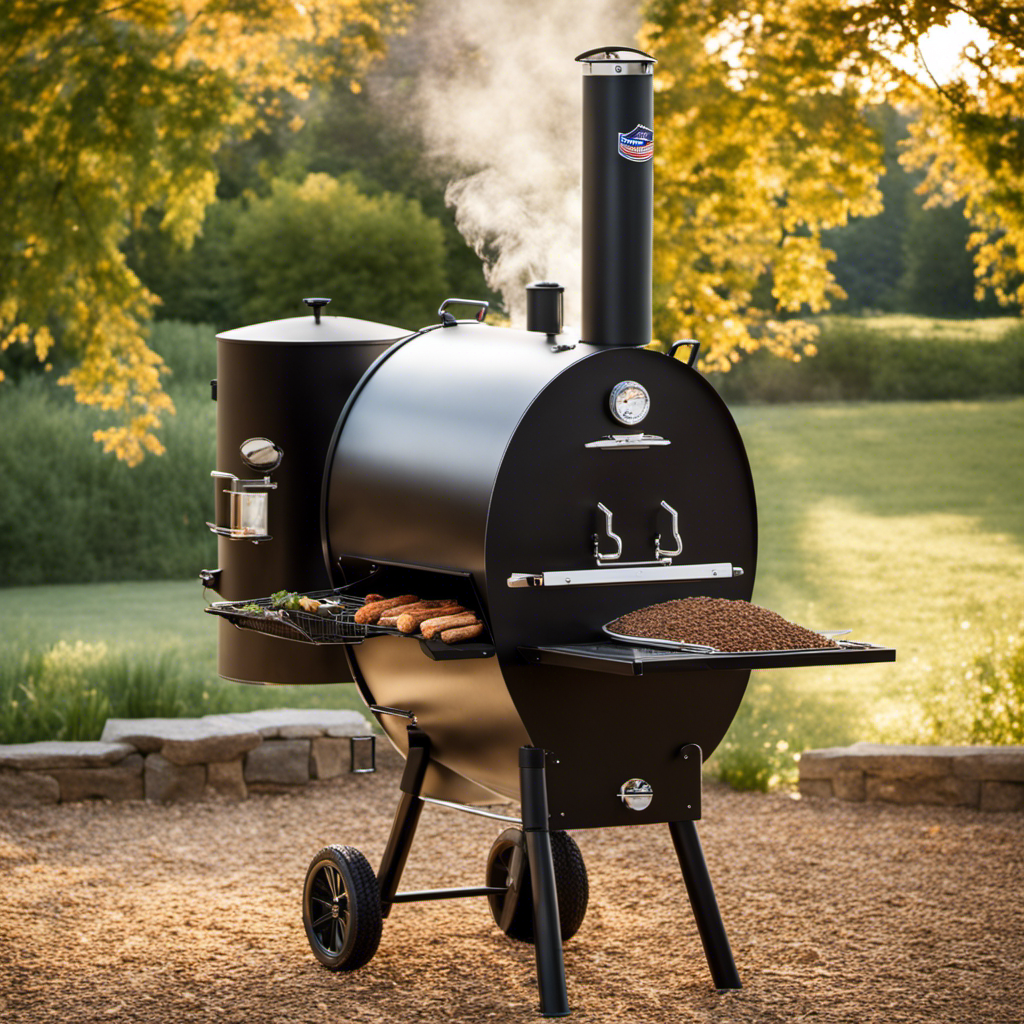Having trouble adequately heating your entire space with your pellet stove? Worry no more! We have the perfect solution to enhance your pellet stove experience – a convection blower.
In this article, we will delve into the power of a convection blower and how it can enhance the efficiency and effectiveness of your pellet stove. Get ready to discover the benefits, working mechanism, and maintenance tips of this game-changing component.
Say goodbye to uneven heating and hello to a cozy and comfortable environment.
Key Takeaways
- A convection blower is a key component of a pellet stove, as it circulates hot air in the room and improves the efficiency and effectiveness of the heating system.
- There are two types of convection blowers used in pellet stoves: fixed-speed blowers and variable-speed blowers. The choice depends on heating needs and budget considerations.
- Regular maintenance of the convection blower is important to maintain its performance. This includes cleaning the blower, checking and cleaning or replacing the filters, and avoiding abrasive materials or harsh cleaners.
- Troubleshooting tips for convection blowers include checking for loose parts, inspecting for visibly loose components, and testing the blower for malfunction or poor performance. Checking the wiring and seeking professional assistance if needed is also recommended.
The Benefits of a Convection Blower on Your Pellet Stove
One of the benefits of having a convection blower on our pellet stove is that it evenly distributes the heat, making our heating system more efficient and effective.
The convection blower pulls in cool air from the room and blows it over the hot surface of the stove, circulating the heated air back into the room.
By keeping the heat inside the room, the convection blower helps reduce the amount of pollutants released into the air. This not only improves our indoor air quality but also reduces the impact on the environment.
Additionally, the even distribution of heat throughout the room allows for better comfort and eliminates cold spots.
With the convection blower, our pellet stove is able to increase energy efficiency and decrease air pollutants, providing us with a more sustainable heating option.
How a Convection Blower Enhances Heat Distribution
By evenly distributing the heat generated by the pellet stove, the convection blower helps us experience a more efficient and effective heating system.
The convection blower plays a crucial role in maximizing heat distribution in a pellet stove. Located at the back or bottom of the stove and powered by electricity, the blower pulls in cool air from the room and blows it over the hot surface of the stove.
This process circulates the heated air back into the room, ensuring that the entire space is warmed evenly. The convection blower is a key component of a pellet stove, improving its efficiency and effectiveness.
It also helps reduce the amount of pollutants released into the air by keeping the heat inside the room. Overall, the convection blower significantly enhances the heat distribution and efficiency of a pellet stove.
Increasing Efficiency: The Role of a Convection Blower
To maximize the efficiency of our pellet stove, we rely on the important role of the convection blower in distributing heat evenly throughout the room. The convection blower is a key component that improves heating efficiency and maximizes heat distribution.
Here are four ways it accomplishes this:
- The convection blower pulls in cool air from the room, ensuring a constant flow of fresh air.
- It blows the cool air over the hot surface of the stove, heating it up effectively.
- The heated air is then circulated back into the room, evenly warming the entire space.
- By maintaining a steady circulation of hot air, the convection blower helps reduce cold spots and eliminates the need for additional heating sources.
With the convection blower working efficiently, our pellet stove provides optimal heating performance, while minimizing energy consumption.
Choosing the Right Type of Convection Blower for Your Pellet Stove
When selecting the appropriate type of convection blower for our pellet stove, we consider factors such as heating needs and budget constraints. It is important to choose the right size of blower to ensure optimal performance and efficiency. Comparing the efficiency of fixed-speed and variable-speed convection blowers can also help in making the right decision.
Here is a comparison of fixed-speed and variable-speed convection blowers:
| Type of Blower | Efficiency | Cost |
|---|---|---|
| Fixed-Speed Blower | Effective at circulating hot air | Less expensive |
| Variable-Speed Blower | Adjusts speed based on heating needs | More expensive |
Fixed-speed blowers are less expensive but may not be as efficient as variable-speed blowers. Variable-speed blowers offer improved heating performance and energy consumption but come at a higher cost. Ultimately, the choice depends on individual heating needs and budget considerations.
Maintaining Your Convection Blower: Essential Tips and Tricks
Maintaining our convection blower is crucial for ensuring its optimal performance and extending its lifespan. Here are some essential tips and tricks for keeping our convection blower in top shape:
-
Clean the blower regularly: Use a soft, dry cloth or a small brush to remove dust and debris from the blades and other parts of the blower. This will help prevent clogging and ensure proper airflow.
-
Check and replace filters: Periodically check and clean or replace the filters of the convection blower. This will help maintain optimal performance and prevent any blockages.
-
Tighten loose parts: Check for any loose screws or bolts on the blower that may cause vibrations or unusual noises. Tighten them using the appropriate tools to ensure smooth operation.
-
Troubleshoot noise issues: If the convection blower is making unusual noises, check for loose connections, damaged wires, or any visibly loose components. Repair or replace as necessary to resolve the noise problem.
Troubleshooting Common Issues With Convection Blowers
We can troubleshoot common issues with our convection blower by checking for loose parts or damaged wiring. Loose parts can cause vibrations or unusual noises, so it’s important to tighten any loose screws or bolts using the appropriate tools. Regularly inspect the blower for any visibly loose components and follow the manufacturer’s recommendations for tightening and maintenance. Another common issue is damaged wiring, which can affect the functioning of the blower. To check the wiring, locate the wiring connected to the convection blower or the pellet stove and look for loose connections or damaged wires. If any wiring is damaged, it should be repaired or replaced. Regularly checking the wiring can help ensure the proper functioning of the convection blower. If you’re uncomfortable with making repairs, it’s best to seek professional assistance.
| Common Issues with Convection Blowers | Solutions |
|---|---|
| Loose parts causing vibrations or unusual noises | Tighten loose screws or bolts |
| Damaged wiring affecting blower functioning | Repair or replace damaged wiring |
| Poor performance or malfunction | Test blower and seek professional assistance if needed |
| Clogged blades | Clean blades with a soft, dry cloth or brush |
| Filters becoming dirty or clogged | Regularly clean or replace filters |
Optimizing Performance: Cleaning and Care for Your Convection Blower
To keep our convection blower operating at its best, it’s important to regularly clean and care for it. Here are some cleaning techniques and troubleshooting tips to optimize its performance:
-
Gently wipe down the exterior of the blower with a soft, dry cloth to remove dust and debris.
-
Use a small brush to carefully clean the blades of the fan, ensuring they’re free from any obstructions.
-
Check and clean or replace the filters of the blower periodically to maintain optimal airflow.
-
If the blower is making unusual noises or not functioning properly, check for loose parts or damaged wiring that may need repair.
Upgrading Your Pellet Stove: The Impact of a Convection Blower
Upgrading our pellet stove with a more efficient convection blower can greatly improve the distribution of heat throughout our space. By improving energy efficiency and troubleshooting techniques, a new convection blower can revolutionize the performance of our pellet stove.
With a more powerful and effective blower, we can ensure that the heat produced by the stove is evenly distributed, eliminating any cold spots in our room. This upgrade won’t only enhance the comfort of our space but also reduce energy consumption and lower heating costs.
Troubleshooting techniques such as regular cleaning and maintenance will further optimize the performance of our convection blower, ensuring its longevity and efficiency.
Achieving Energy Savings With a Variable-Speed Convection Blower
By using a variable-speed convection blower, our energy consumption can be reduced while still maintaining optimal heating performance. This innovative blower offers several benefits that contribute to improving efficiency and reducing energy consumption.
- The variable-speed feature allows the blower to adjust its speed based on the heating needs of the room, ensuring that the right amount of hot air is circulated.
- The blower operates at different speeds, creating a gentle and consistent flow of warm air throughout the space.
With its ability to adapt to changing conditions, the variable-speed blower optimizes the heating process, minimizing energy waste.
- By efficiently distributing the heat, this blower ensures that every corner of the room is evenly warmed, eliminating cold spots and maximizing comfort.
Overall, investing in a variable-speed convection blower is a smart choice for those looking to improve the efficiency of their pellet stove and reduce energy consumption.
Expert Advice: Installation and Maintenance of Convection Blowers
Now let’s talk about the installation and maintenance of convection blowers for pellet stoves.
When it comes to installation techniques, it’s crucial to carefully follow the manufacturer’s instructions. This includes properly positioning the blower at the back or bottom of the pellet stove and ensuring a secure connection to the electrical supply.
Common maintenance mistakes to avoid include neglecting regular cleaning and failing to check for loose parts or damaged wiring.
To maintain optimal performance, it’s important to regularly clean the blower using a soft cloth or brush, paying special attention to the blades to prevent clogging.
Additionally, periodically checking and cleaning or replacing the filters will help ensure efficient operation.
If there are any suspicions of malfunction or poor performance, it’s recommended to test the blower and seek professional assistance if needed.
Can a Convection Blower Improve Ventilation for Pellet Stoves?
Yes, a convection blower is one of the best ventilation options for pellet stoves. It helps to improve air circulation and distribute heat more evenly throughout the room. This can result in better overall heating efficiency and increased comfort for those using the pellet stove.
How Does a Convection Blower Improve Ventilation in Pellet Stoves?
A convection blower is one of the best ventilation options for pellet stoves. It works by drawing in cool air from the room, passing it over the hot stove and then releasing the heated air back into the room. This process helps to improve air circulation and distribute heat more effectively.
Frequently Asked Questions
Can a Convection Blower Be Added to an Existing Pellet Stove?
Yes, a convection blower can be added to an existing pellet stove. Adding a convection blower can greatly improve the energy efficiency of the pellet stove by evenly distributing the heat throughout the room.
This helps to maximize the effectiveness of the heating system and reduce energy consumption. By incorporating a convection blower, you can enhance the overall performance of your pellet stove and revolutionize its heating capabilities.
How Noisy Is a Convection Blower During Operation?
During operation, a convection blower on a pellet stove can vary in noise level depending on the specific model and manufacturer. However, many modern convection blowers are designed to operate quietly, allowing you to enjoy the warmth without the distraction of excessive noise.
The benefits of a quiet convection blower include a more peaceful living environment and the ability to use the pellet stove without disturbing conversations or activities in the room.
Can a Convection Blower Be Used in Conjunction With Other Heating Systems?
Using a convection blower in conjunction with central heating systems offers several benefits. It helps to distribute the heat generated by the pellet stove throughout the entire space, ensuring even heating. This can improve the overall efficiency of the heating system and reduce energy consumption.
To optimize the performance of a convection blower in a pellet stove, regular cleaning and maintenance are essential. This includes cleaning the blower, checking and replacing filters, and ensuring all connections are secure.
Is It Possible to Adjust the Speed of a Fixed-Speed Convection Blower?
Yes, it’s possible to adjust the speed of a fixed-speed convection blower. By adding a variable speed control module, you can change the speed of the blower to match the heating needs of the room.
This allows for improved heating performance and reduced energy consumption. The benefits of a variable-speed convection blower include better control over the distribution of heat, increased efficiency, and the ability to customize the heating experience to your preference.
Adjusting the speed of the blower can revolutionize your pellet stove by optimizing its performance.
What Is the Average Lifespan of a Convection Blower on a Pellet Stove?
The average lifespan of a convection blower on a pellet stove can vary depending on factors such as usage, maintenance, and the quality of the blower. With proper care and regular maintenance, a convection blower can last anywhere from 5 to 10 years.
To extend its lifespan, it’s important to clean the blower regularly, remove dust and debris, and check for loose parts or damaged wiring. Following these maintenance tips can help ensure optimal performance and efficiency of the convection blower.
Conclusion
In conclusion, a convection blower is a game-changer for your pellet stove, providing efficient and even heat distribution throughout your space.
Did you know that by using a convection blower, you can increase the heating efficiency of your pellet stove by up to 20%?
This means not only a more comfortable environment but also potential energy savings.
Don’t miss out on the benefits of a convection blower for your pellet stove. Upgrade your heating system today!
Logan’s affair with adventure began in childhood. He hailed from a small town where vast forests bordered one side and endless shores stretched on the other. His days were spent exploring uncharted woods, climbing tall trees, or listening to the tales of old sailors. This early immersion in a world brimming with stories and mysteries became the foundation of his passion for writing.












